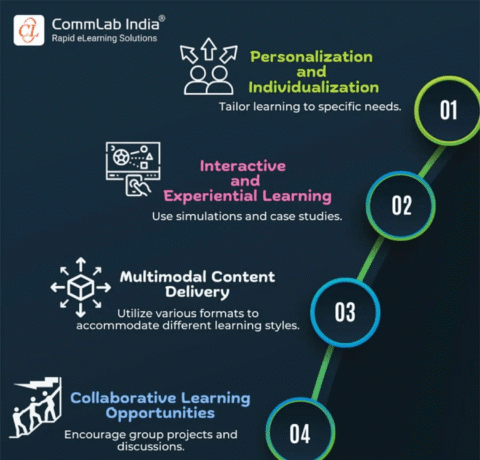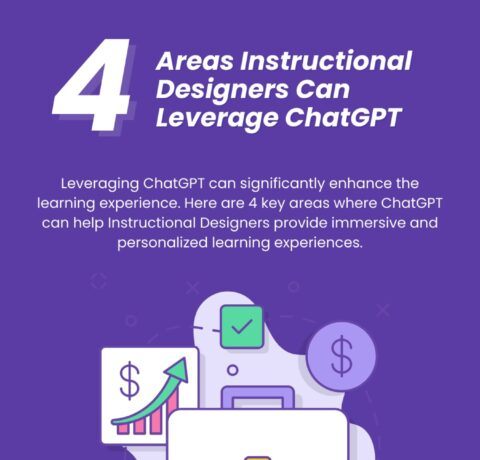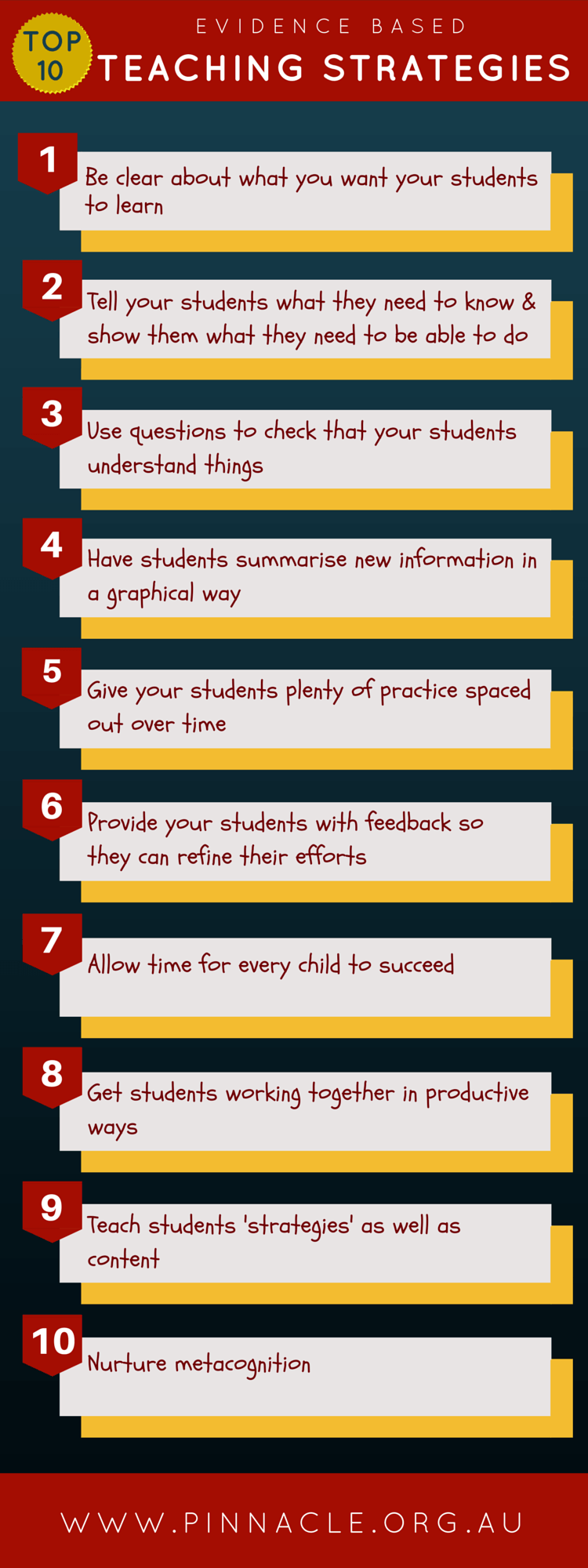Top 10 Evidence Based Teaching Strategies Infographic
Most teachers care about their students’ results, and if you are reading this, you are undoubtedly one of them. Research shows that evidence based teaching strategies are likely to have the largest impact on student results. The Top 10 Evidence Based Teaching Strategies will help you discover the science of what works.
1. Clear Lesson Goals
It is crucial that you are clear about what you want your students to learn during each lesson. Clear lesson goals help you (and your students) to focus every other aspect of your lesson on what matters most.
2. Show & Tell
Once you are clear about what you want your students to know and be able to do by the end of the lesson, you need to tell them what they need to know and show them how to do the tasks you want them to be able to do.
2. Questioning to Check for Understanding
Techniques such as randomised sampling, student answer-boards and tell-a-friend help you to check for understanding before moving on from the show and tell part of your lesson while you can use other questioning techniques at different stages of your lesson.
4. Summarise New Learning In A Graphical Way
Graphic outlines include things such as mind maps, flow-charts and Venn diagrams. Discussing a graphical summary is a fantastic way to finish off your show and tell. You can then refer to it one more time at the end of your lesson.
5. Plenty of Practice
Practice helps students to retain the knowledge and skills that they have learned while also allowing you another opportunity to check for understanding.
6. Provide Your Students With Feedback
Unlike praise, which focuses on the student rather than the task, feedback provides your students with a tangible understanding of what they did well, of where they are at, and of how they can improve.
7. Be Flexible About How Long It Takes to Learn
When you adopt mastery learning, you differentiate in a different way. You keep your learning goals the same, but vary the time you give each child to succeed. Within the constraints of a crowded curriculum, this may be easier said than done; however, we can all do it to some degree.
8. Get Students Working Together
Group work is not new but productive group work is rare. To increase the productivity of your groups, you need to be selective about the tasks you assign to them and the individual role that each group member plays. You should only ask groups to do tasks that all group members can do successfully.
9. Teach Strategies Not Just Content
From assignments and studying, to characterisation, there are strategies underpinning the effective execution of many tasks that you ask students to perform in school. And, just as with content, you need to tell students about these strategies, to show them how to use them and to give them guided practice before asking them to use them independently.
10. Nurture Meta-Cognition
Meta-cognition involves thinking about your options, your choices and your results – and it has an even larger effect on student results than teaching strategies. When using meta-cognition your students may think about what strategies they could use before choosing one, and they may think about how effective their choice was (after reflecting on their success or lack thereof) before continuing with or changing their chosen strategy.







You can adjust your cookie preferences here.